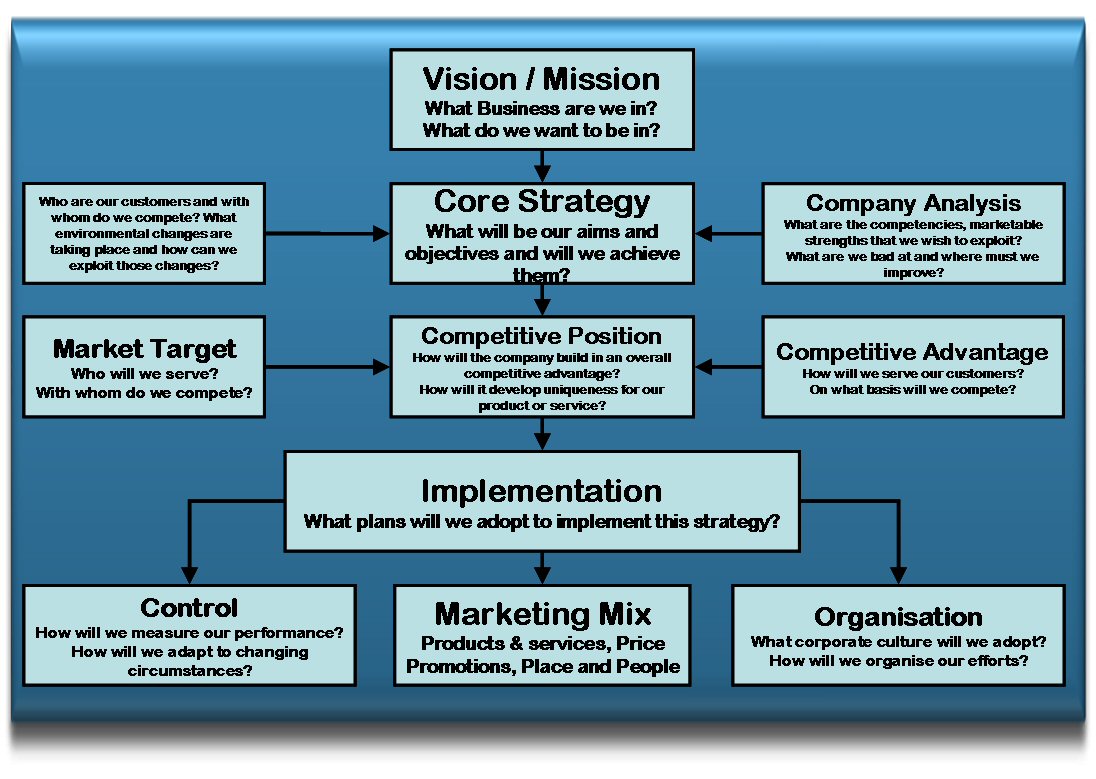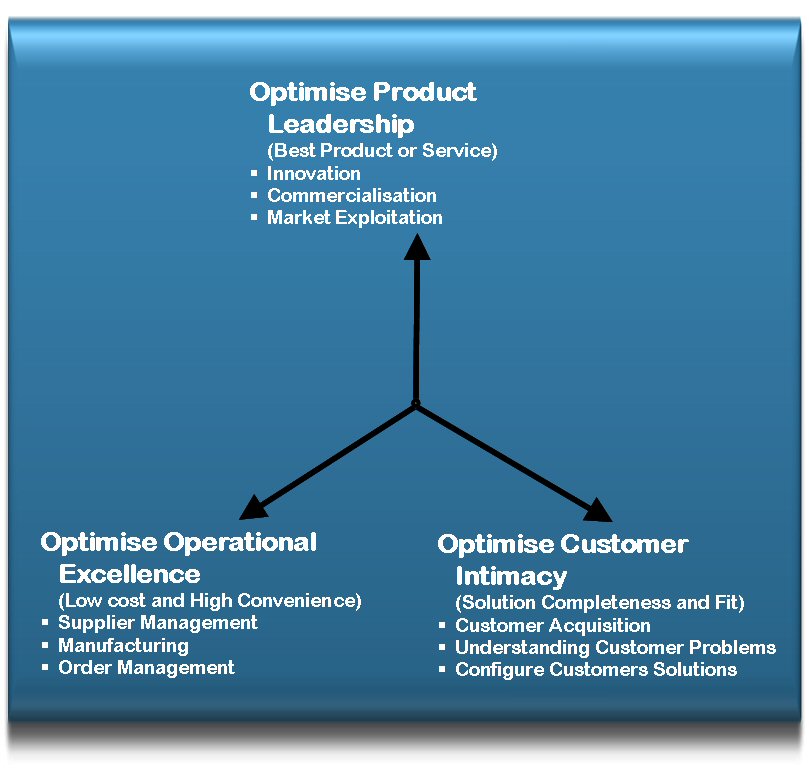1.03 - Marketing Strategy
The Elements of a Marketing Strategy Process

The Market Led Business
A Market Led Business is:-
- One that regularly monitors and reviews its competitive environment.
- Understands the needs of its customers and seeks to meet or exceed those needs.
- One that recognizes the need to put in place an infrastructure that supports innovation and research and development.
- An organization that is proactive not reactive
- Customer focused in all its activities.
The Discipline of Market Leaders
Companies achieve leadership by focusing on one “value discipline”
Michael Treacy and Fred Wiersema CSC Index
Customer value can be optimised in one of three ways

- How is it that some companies are re-inventing competition in their markets while others are seemingly oblivious to the changing world?
- The idea is deceptively simple: that successful organizations, the market leaders, excel at one type of value to their chosen customers. The key is focus.
- Market Leaders select a single “value discipline” – best total cost, best product, or best total solutions – and then build their organization around it.
- They sustain their leadership position not by resting on their laurels, but by offering better value year after year. Choosing one value discipline to master does not mean abandoning the other two, only that a company must stake its reputation – and focus its energy and assets – on a single one to achieve success over the long term. No company can reliably succeed today by being all things to all customers.
Sourcing Strategies
World Class manufacturing organizations are recognising that significant competitive advantage can be gained by strategically reviewing their sourcing policies in line with the overall business and marketing strategy. More and more organizations appreciate the importance of concentrating on what they do best and seek out experts to provide the products and services that are not part of the core business.
Make or Buy Strategy
Make versus Buy is now part of any organization’s business strategy. Companies have in the past based their Make or Buy decision solely on financial considerations.
World Class organizations now take into account many other factors before making the decision on whether or not a product will be produced in-house or outsourced.
Those factors are:
- Where does the business see itself in 5 – 10 years time? (What is its competitive advantage?)
- Should the organization focus on its core skills or should it build a wide range of capabilities?
- Do the skills exist in-house for the new products or components or can an external manufacturer produce this part more effectively?
- Do the volumes make it worthwhile for the investment necessary to produce this new product? Is this an area where the company wishes to invest its resources?
- Is it beneficial to the organization to outsource these products to lower the break even point and reduce risk?
- Should the organization follow a strategy of vertical integration? Does it have underutilised resources or sourcing concerns that could be resolved by integration?
Only when these questions have been answered can an organisation satisfactorily determine the sourcing strategy for a particular product or service.
Optimising the sourcing of materials, components and services is critical to the future success of any enterprise. In a typical manufacturing organization 40 – 50% of the cost of producing products is in the purchase of raw materials or standard parts and components. The bought-out content of products is continually rising as organizations see the need to focus on what they are good at. Considerable savings can be achieved by strategically reviewing the organizations purchasing policy.
A sourcing strategy invariably would consider the following:
- Are all of the issues concerning MAKE vs BUY clearly understood?
- Does the supplier have a rigorous supplier selection procedure?
- Has the supplier base undergone a thorough review and assessment?
- Are the suppliers able to satisfy the current and future needs of the business?
- Does the right type of relationship structure exist between the supplier and the customer? (eg partnership / preferred supplier)
- Is their a good area segmentation rationale?
- Do the sourcing decisions support the organization’s logistics strategy?
- Minimisation of total acquisition cost as opposed to invoice price?
- Leverage over the supplier base (relative power of suppliers and buyers)
- What is happening in the marketplace (issues / trends)?
Answering these questions will ensure that the business has a long term sustainable competitive advantage through a Strategic Sourcing policy.